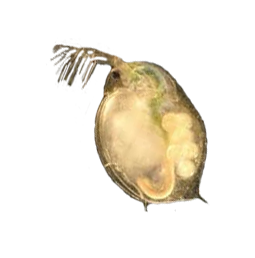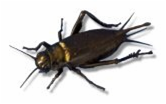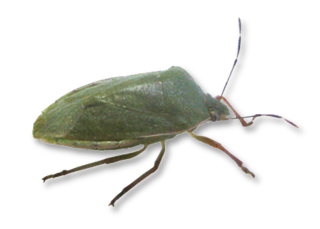NIB
The purpose of the investment project BTH-NIB is the assurance of the appropriate infrastructural conditions for the use of research and developmental opportunities in the fields of operation of the NIB.
Play Video About project Publication
Dr. Maja Zorović EX_EMPLOYEES
Working place: Research Associate
Department: Department of Organisms and Ecosystems Research
Education
PhD
• 2005: University of Ljubljana, Biotechnical Faculty, Department of Biology
• Thesis: Morphological and physiological properties of vibratory neurones in thoracic ganglia of the stinkbug Nezara
viridula (L.) (Heteroptera: Pentatomidae); supervisor: Prof. Dr. Andrej Čokl
MSc
• 2003: University of Ljubljana, Biotechnical Faculty, Department of Biology
• Thesis: Functional properties of the vibratory interneurones in the central ganglion of the
southern green stinkbug Nezara viridula (Heteroptera: Pentatomidae); supervisor: Prof. Dr. Andrej Čokl
BSc
• 2000: University of Ljubljana, Biotechnical Faculty, Department of Biology
• Thesis: Toxicity testing of copper and zinc ions and their mixtures on Daphnia magna using microbiotest
Daphtoxkit F™ magna; supervisor: Prof. Dr. Damjana Drobne
Employment
• 2000-2005:Young Researcher at the Dept. of Entomology, National Institute of Biology, Ljubljana, Slovenia
• 2005-2008:Postdoctoral research associate at the Dept. of Zoology, University of Cambridge: Revealing
principles of auditory pattern recognition and steering: A combined neurobiological and engineering study;
dr. Berthold Hedwig (PI)
• 2009-2912: Assistant with PhD,Dept. of Entomology, National Institute of Biology, Ljubljana, Slovenia
• May 2012- : Research associate,Dept. of Entomology, National Institute of Biology, Ljubljana, Slovenia
Research interests
Insect neurobiology, neuroethology and behaviour, bioacoustics,
vibratory and sound communication in insects, pest management.

During a three year postdoctoral position at the University of Cambridge, UK, I have investigated sound communication in the cricket Gryllus bimaculatus. The trackball system that was used for experiments enabled recording from single neurons in the cricket brain during behaviour. The males crickets produce sound signals of 4.8 kHz frequency by rubbing their wings together. The females lack the wing structures that are used for sound production; their tasks in male-female communication are recognition of the species-specific song and orientation towards the sound source. The papers published in 2011 and 2013 describe the morphology and physiology of neurons involved in phonotactic behaviour. The local brain neurons show selectivity for the species-specific temporal pattern, which triggers turning and movement of the females towards the singing males (phonotaxis). The injection of depolarizing current into some descending brain neurones elicited waking and/or steering, showing the neurons' involvement in phonotaxis circuitry.

Nezara viridula (Heteroptera: Pentatomidae) was used as a model animal for research into processing of vibratory signals in insects. This species in a cosmopolitan pest feeding on soy, beans, tomatoes and other economically important plants. Both males and females produce 100 Hz frequency signals by vibrating the abdomen. Vibratory communication is a part of their mating behaviour. The signals are transmitted through plants from the sender to the receiver, which then picks up the signals via sensory organs in the legs and the antennae. Using standard neurophysiological techniques I have described functional and morphological properties of vibratory interneurones in the CNS of N. viridula. This work represents the first extensive study of vibratory signals' processing in an insect that uses vibrations as a primary means of communication.
EU projects

I was involved in the 7th Framework programme EU project Q-DETECT (Developing quarantine pest detection methods for use by national plant protection organizations and inspection services (2010-2013)). In the scope of this project our Dept. tested the use of laser vibrometry for detection of wood-boring insect pests. The females lay eggs into the bark, and the larval stages feed inside the trunk and branches, creating tunnels and galleries that weaken structural timber.Such hidden infestations have always presented a challenge for pest managers, regulators, and researchers. Difficult to detect, these insects can easily spread internationally inside wood packaging material, cut wood, saplings or for example the bonsai trees.Using laser vibrometry we recorded incidental sounds and vibrations generated by the larvae during feeding and other movements inside the wood. We tested the sensitivity and accuracy of the laser vibrometer for detection of the Asian longhorned beetle (Anoplophora glabripennis) and the Red palm weevil (Rhynchophorus ferrugineus). Experiments with the latter and recording from palm trees was carried out in collaboration with the EU project Palm protectand the Plant Protection Institute from Israel (ARO, Volcani center).
Selected literature
ZOROVIĆ Maja, HEDWIG Berthold (2013) Descending brain neurons in the cricket Gryllus bimaculatus (deGeer): auditory responses and impact on walking. J Comp Physiol A, 199(1): 25-34.
ZOROVIĆ Maja (2011) Temporal processing of vibratory communication signals at the level of ascending interneurons in Nezara viridula (Hemiptera: Pentatomidae). PLOS One 6(10): e26843.
ZOROVIĆ Maja, HEDWIG Berthold (2011). Processing of species-specific auditory patterns in the cricket brain by ascending, local, and descending neurons during standing and walking. Journal of neurophysiology, 105(5): 2181-2194.
ZOROVIĆ Maja, PREŠERN Janez, ČOKL Andrej (2008). Morphology and physiology of vibratory interneurons in the thoracic ganglia of the southern green stinkbug Nezara viridula (L.). Journal of Comparative Neurology, 508: 365-381.


 Scope of NIB's accreditation is given in the Annex to the accreditation certificate and in the List of accredited methods for detection of GMOs and microorganisms – plant pathogens
Scope of NIB's accreditation is given in the Annex to the accreditation certificate and in the List of accredited methods for detection of GMOs and microorganisms – plant pathogens 
